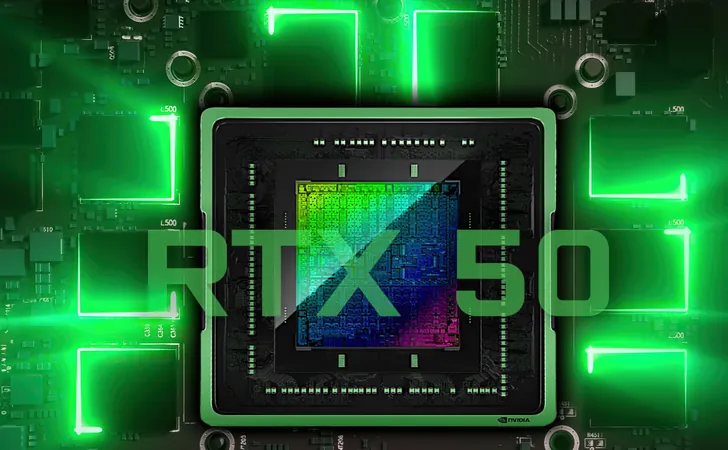
Major Leap Ahead: NVIDIA's Blackwell GB202 GPU for RTX 5090 Set to Outpace 4090 with 22% Size Increase
2024-11-22
Author: Wai
Introduction
NVIDIA is pushing the boundaries of graphics performance with its upcoming GeForce RTX 5090, set to become the flagship card in the 'Blackwell' series. Excitingly, the new GPU, known as the Blackwell GB202, will feature a remarkable die size of approximately 744mm², representing a significant 22% increase compared to the current RTX 4090's AD102 chip.
Specifications & Design
According to the latest reports, the GB202 will measure around 24x31mm, with a package size of 63x65mm, resulting in a total footprint of about 4095mm². For context, the RTX 4090's die size stands at 609mm², which means the RTX 5090 will not only be larger but also push the limits of what modern GPUs can achieve.
Efficiency Concerns
While a bigger die size often raises concerns about power consumption and heat output, NVIDIA's new design aims to mitigate these issues. Notably, this size increase is still smaller than the 754mm² of the Turing TU102 chip, which debuted with the original RTX '20' series, suggesting that technological advancements have led to more efficient designs over time.
Performance Specifications
In terms of specifications, the NVIDIA GeForce RTX 5090 will utilize the PG144/145-SKU30 PCB design, housing the GB202-300-A1 GPU core. While 192 Streaming Multiprocessors (SMs) exist within the architecture, only 170 will be enabled, translating to 21,760 CUDA cores—an 11.4% decrease from the maximum potential. This reduction mirrors the slight scaling back seen with the RTX 4090.
Memory Capabilities
The memory capabilities of the RTX 5090 are equally impressive, boasting a staggering 32 GB of GDDR7 VRAM on a 512-bit interface. With operational speeds of 28 Gbps, the card is expected to deliver a jaw-dropping bandwidth of up to 1792 GB/s. Further advancements, such as a larger L3 cache and enhanced memory compression techniques, will contribute to the impressive overall performance.
Power Requirements
Powering these features, the RTX 5090 will come with a Total Board Power (TBP) rating of 600W. However, it’s important to note that this figure does not reflect real-world performance, which is often considerably lower in typical gaming scenarios. Preliminary designs suggest a 2-slot cooler system for the Founders Edition, enhancing thermal management.
Conclusion and Future Outlook
Scheduled for a grand debut at CES 2025, the NVIDIA GeForce RTX 5090 is generating plenty of buzz within the gaming and graphics communities. As we inch closer to its release, industry experts and enthusiasts alike are eager to see how this cutting-edge technology will redefine gaming performance and graphics fidelity. Stay tuned for more updates on what promises to be a game-changer in the GPU market!




 Brasil (PT)
Brasil (PT)
 Canada (EN)
Canada (EN)
 Chile (ES)
Chile (ES)
 España (ES)
España (ES)
 France (FR)
France (FR)
 Hong Kong (EN)
Hong Kong (EN)
 Italia (IT)
Italia (IT)
 日本 (JA)
日本 (JA)
 Magyarország (HU)
Magyarország (HU)
 Norge (NO)
Norge (NO)
 Polska (PL)
Polska (PL)
 Schweiz (DE)
Schweiz (DE)
 Singapore (EN)
Singapore (EN)
 Sverige (SV)
Sverige (SV)
 Suomi (FI)
Suomi (FI)
 Türkiye (TR)
Türkiye (TR)